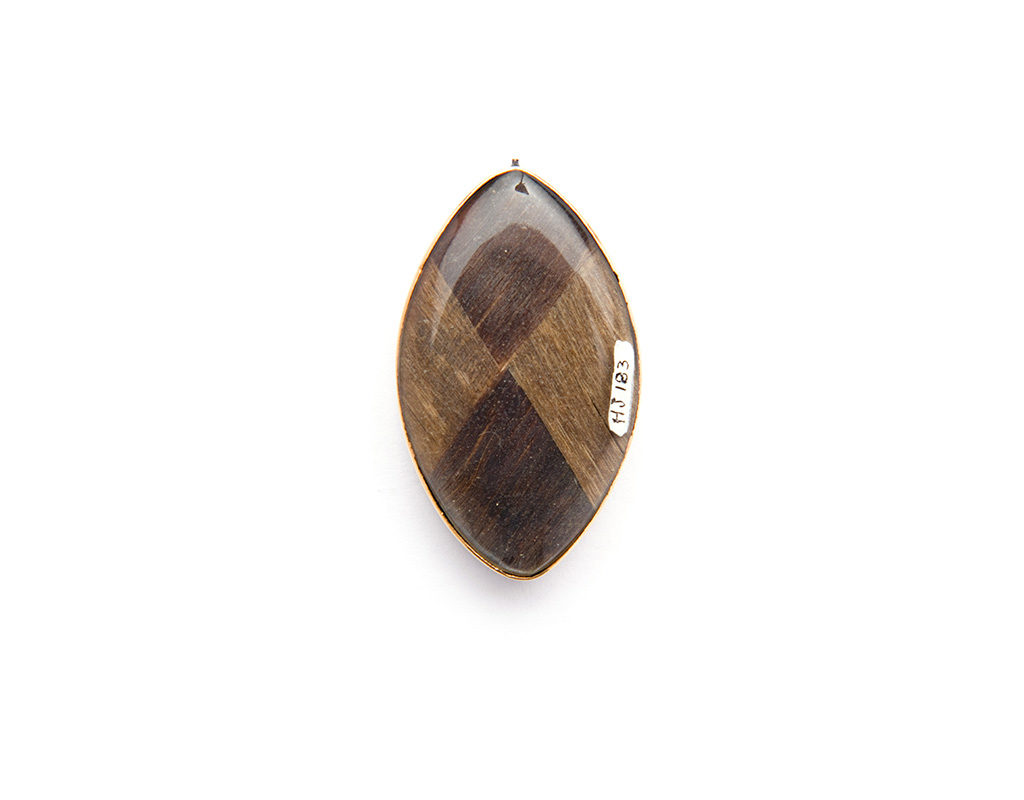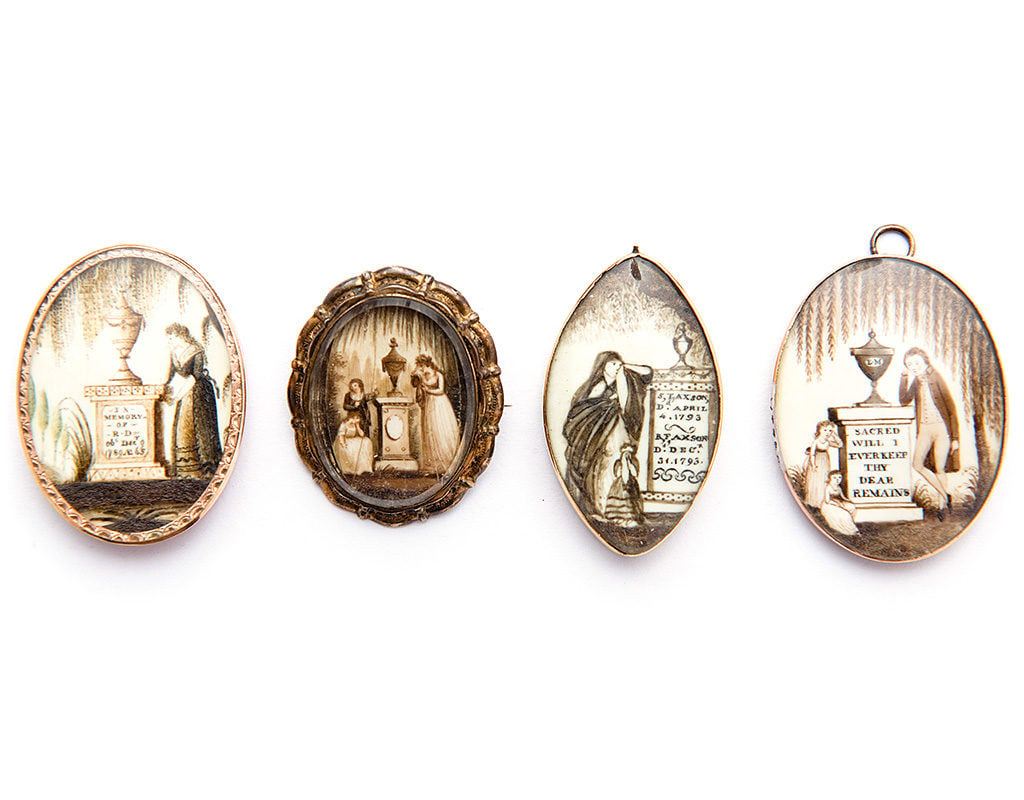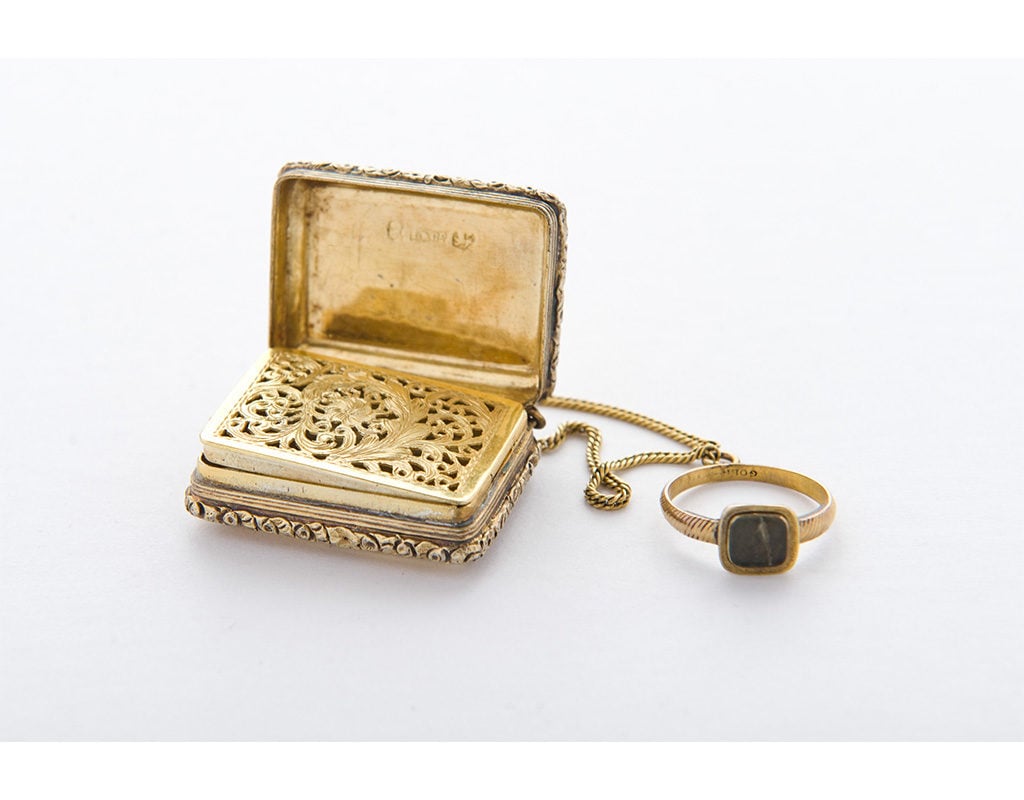Storeroom Stories: Mourning Jewelry
PAST EXHIBIT
“Hair is at once the most delicate and lasting of our materials and survives us like love…”
– Godey’s Lady’s Book, 1860
 Mourning brooch (reverse side) marked for two members of the Axson Family, 1793. Each person’s hair is arranged in contrasting pattern.
Mourning brooch (reverse side) marked for two members of the Axson Family, 1793. Each person’s hair is arranged in contrasting pattern.
Besides its visual appeal, jewelry has, since the earliest of days, remained a quintessential tool for communication. While hearing the word “jewelry” certainly evokes visions of diamonds, gold or silver, there is an additional subcategory designed specifically to suggest sadness and loss.

Mourning brooches, 1757-1800
It’s no secret that assorted jewelry pieces made from human remains have existed since prehistory, and as colonialism spread, these tribal-like accoutrements were unsurprisingly adopted by within western societies. Of course, while human teeth, bone and skin were a bit morbid for most socialites, hair was not. Like lace, hair could be worked into beautifully intricate patterns and thereafter recognized as a memento mori or souvenir of sorts from a deceased loved one.
Mourning ring with attached vinaigrette engraved for Harriet Bachman, 1846.
During Charleston’s colonial era, forms of mourning jewelry were relatively small in size, which kept with the style of the Georgian period (circa 1714-1830). Lockets, medallions and brooches often depicted funerary scenes “drawn” with hair from the departed. For example, a funerary brooch made for St. Philip’s Church member Mrs. John Freer after the death of her husband in 1787 shows a traditional scene of weeping willows and a bereaved widow kneeling beside an urn-shaped burial marker. Fascinating, though, is that upon closer inspection, much of this detailed scene was not painted or sketched with ink, but rather sculpted with hair salvaged from Mrs. Freer’s deceased husband.
– Chief Curator Grahame Long

